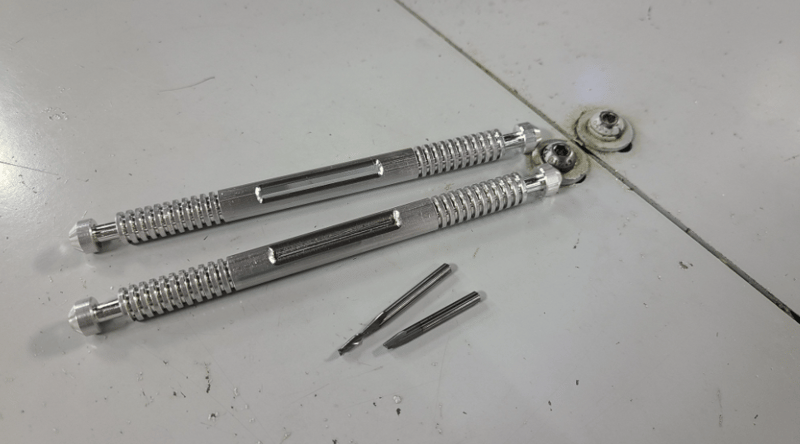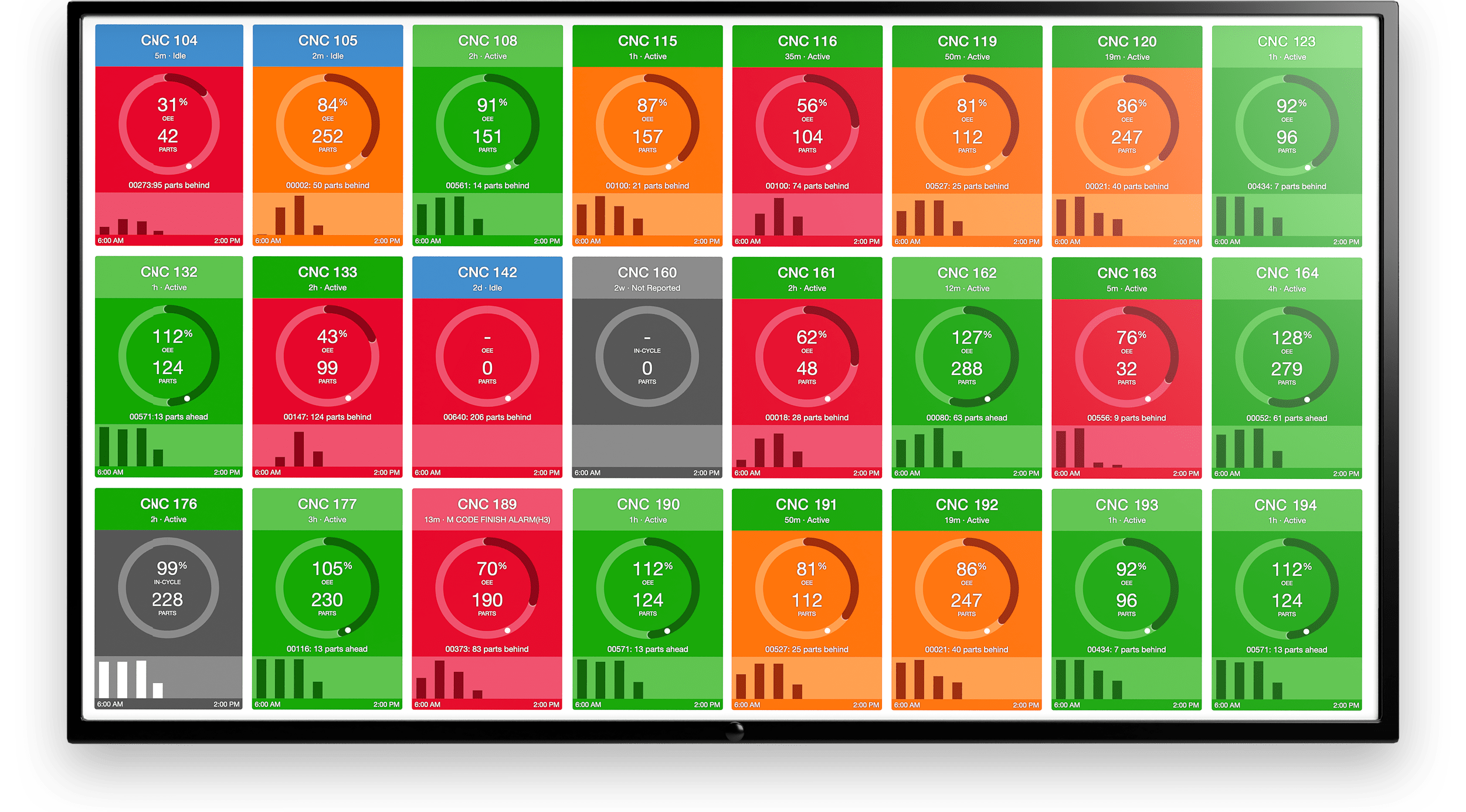There are a few core measurements that every manufacturer uses to manage their operation. Measurements like efficiency, productivity, capacity, labor, and equipment utilization are almost universally measured to benchmark performance and assess the effectiveness of processes.
Quality is an equally critical metric that must be a part of an overall assessment of business health. Because measurements like efficiency and productivity don’t necessarily mean high quality, implementing plans to improve these other measurements must be accompanied by quality procedures to prevent waste and rework.
This is why it is most common for manufacturers to use OEE for measuring performance, as it takes into consideration production quality.

Let’s take a closer look at what quality is defined as within a production environment as well as how you can improve production quality while retaining efficiency.
What is Manufacturing Quality?
Manufacturing quality is the production of finished goods that adhere to specifications or standards. It means the products are free from defects and meet customer expectations for performance and lifespan.
Manufacturing quality is achieved through quality control (QC) using documented, repeatable, and measurable processes that catch quality defects. It’s also achieved using a strong quality management system and quality assurance (QA) protocols to prevent defects.

An example of a scrap part due to an endmill that broke during the machining operation.
Improving Quality in Manufacturing
There are a multitude of ways to improve quality in manufacturing. From adjusting processes, developing work standards, monitoring parts closely, and deploying technology. The question really comes down to improving part quality in such a way that it continues to be cost-effective.
If managers develop strategies that are too expensive, it will greatly reduce the overall efficiency of the business as profit margin will shrink. The key is defining quality accurately, and building strategies to address it in a cost-efficient manner while ensuring the end result leads to customer satisfaction.
This is a tricky balance. Here are some strategies to consider for improving your quality program.
Define Quality for Your Operation
What's a "good" part?
Traditional manufacturing relied on operator skill sets and tribal knowledge from a few experienced people. Today, manufacturing requires strict standards for regulatory compliance in many industries. It also includes precise, well-designed product specifications for industries like CNC machining that produce medical, defense, and aerospace manufacturing parts.
Quality must be defined so that everyone knows what measurements will be used and what terminology is accepted. Quality expectations must be set for operators, managers, and quality inspection staff.
Implement Robust Quality Management
A quality management system (QMS) is a formal program that sets the rules of the road for the operation. It turns the company’s definition of quality into rules and operating procedures to govern how it creates and delivers products.
Every company should have audited, documented quality procedures and a robust program to maintain and update specifications. These must be accessible to those who need them, like operators and line quality staff. Procedures must include a component for action or improvement when defects are found.
Utilize Standard Work
Quality isn’t only the operating procedures for inspection and intervention. Standard operating procedures are needed for machine operation, raw materials staging, assembly, and every value-added process in the production stream.
Documenting the correct task order, operator motion, startup, and part removal helps ensure everyone is doing the same job, the same way, every time. This consistency eliminates variances in operating procedures from operator-to-operator, shift-to-shift, and machine-to-machine.
Standard work should be well documented, constantly updated, and be accessible to all those who need them in a place and a format that is convenient for optimal efficiency.
For example, you could deliver instructions to operators via a tablet at the machine.

An example of work instructions that you could deliver to operators and technicians on the shop floor. [Image Source]
Deploy Daily Team Maintenance
Maintenance will always be required, and much of it’s done at the hands of experienced, dedicated staff with specific skill sets. But many maintenance tasks can be performed by operators as the need arises. Those running the machine can perform tasks like cleaning, lubrication, startup checks, and quality checks.
Operators will often know how a machine is performing in advance of problems that cause defects. A formal program of daily team maintenance empowers them to conduct small maintenance objectives to prevent defects through established procedures.
Leveraging machine condition monitoring, maintenance teams can ensure that they are guided by accurate equipment data to plan out maintenance activities. This will enable preventive and predictive maintenance, versus a simple calendar-based maintenance plan.
Train, Train, Train
Manufacturing operations are complex by nature. Traditionally, it wasn’t unusual to keep inspection staff and online operator knowledge and training separately. The more knowledgeable and well-trained line staff are in identifying and intervening defects, the lower the defect count will be.
Training on quality expectations and performance should be included in onboarding new employees. But it may also require continual ongoing training so that the concept, the expectations, and the procedures for preventing defects become woven into the company culture.
Use Available Technology
Implementing a strong quality culture requires continuous training and improvement. A wide range of technology is available today to help manufacturers manage the moving parts and systems necessary for superior quality performance.
Plug-and-play Machine Connectivity
This technology includes software for QMS, preventive and predictive maintenance programs, and manufacturing execution systems. Quality can also be improved by utilizing industrial IoT, where connected factory assets can be monitored down to the spindle level and defect inspection is moved closer to the point of production.
Leveraging Digital Connectivity
While the above practices will improve quality, they require a lot of thought, effort, and maintenance. And just as machine data can be used to eliminate manual tracking and analysis of metrics such as efficiency, productivity, capacity, and utilization, it can also be leveraged for superior quality.
A machine data platform can help manufacturers monitor, inspect, reject, and manage quality while integrating with QMS, MES, ERP, and other software. This connection can improve quality and reduce manual, error-prone tasks through:
- Scrap part data can be collected to understand the top reasons for poor quality
- Predictive algorithms that identify tool failures [See how BC Machining did this]
- Historical data can reveal trends not detectable by human analysis
- Dynamic automated workflows that update changes to specifications and standard work immediately to ensure everyone has access to the latest versions
These capabilities and more are possible using a production monitoring platform like MachineMetrics. By leveraging real-time machine data, operators and managers have the visibility and information needed to prevent defects or significantly limit additional scrap.
Set up some time with our team to learn how our machine data platform can leverage your data and improve your quality. Or, see the platform in action with an on-demand video demo.



.png?width=1960&height=1300&name=01_comp_Downtime-%26-Quality_laptop%20(1).png)






.gif)









Comments